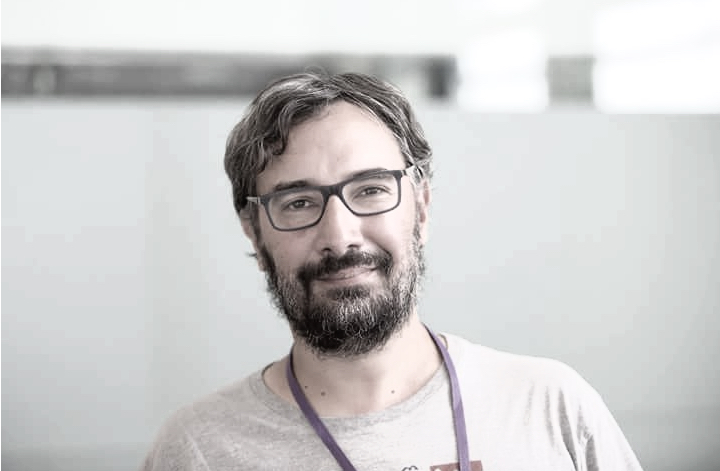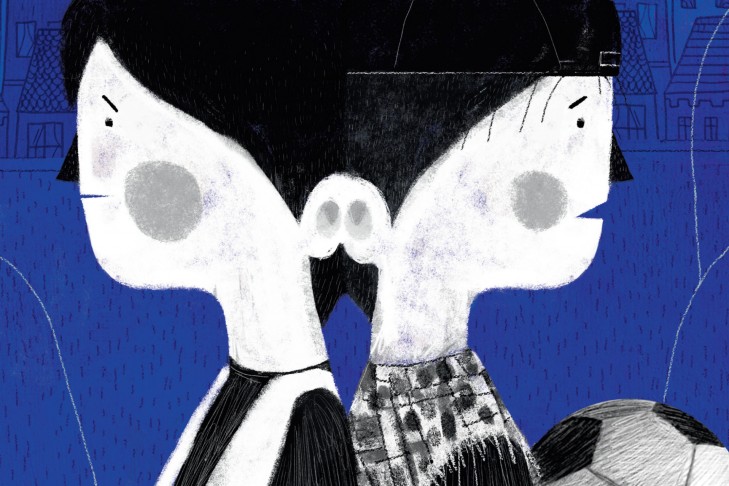Reading the news, the gulf between Israel and Palestine often appears vast; the chasm between cultures impossible to bridge.
But children are the same everywhere, and it’s this message that inspired Juan Pablo Iglesias to write “Daniel and Ismail.”
The book focuses on two children, one Jewish and the other Palestinian, who start as strangers with similarities: they live in the same city and have the same birthday. They even coincidentally receive the same birthday presents: a traditional scarf (a tallit for Daniel and keffiyeh for Ismail) and a soccer ball. One day, they don their scarves and meet on the soccer field, impressing one another with their crafty footwork.
They have so much fun that they lose track of time and accidentally swap their gifts: Daniel grabs Ismail’s keffiyeh, and Ismail takes Daniel’s tallit. When they get home, their parents are shocked and upset. That night, both boys have nightmares. But the next day, they reunite in the park and get back to playing.
Iglesias, 41, is part of Santiago, Chile’s small Jewish population of roughly 20,000 people. He works as a project manager at a medical technology start-up, but he was moved to write the book in his free time after seeing news of violence between Israelis and Palestinians deepen and spread on social media.
“It started to be ugly, I think, for both communities. You can see the tension. It felt like something in the air,” he says. “I wanted to write about understanding that, if someone is different, it doesn’t have to be a bad thing.”
The picture book came out in Chile two years ago and is now being taught in schools, he says.

However, it was recently released in the United States thanks to Amherst College Latin American studies professor Ilan Stavans. Stavans runs Restless Books, a nonprofit independent publisher that champions international literature that bridges cultural gaps. He was attending a literary conference in Chile when a book about futbol caught his eye; he quickly discovered that it was about so much more. Happily, he soon discovered that Iglesias was also at the conference. Stavans brought up the idea of bringing the work to the United States.
“I was really surprised by the book. One doesn’t find many books with Jewish content for children in Latin America. It was very courageous in that it dealt with two children, one Palestinian and one Jewish,” he says. “I had this intuition that it would be an attractive idea trilingually.”
He hoped to translate the work into English, Hebrew and Arabic. To do so, he launched a Kickstarter campaign to build publicity for the book. “That’s the really productive side of Kickstarter. You can build an audience. You have people who are supporting your project and giving money for it,” he says.
He also looked for translators for Hebrew and Arabic, a challenging proposition because many shied away from such a controversial topic.
“Some said that participation would cost them socially or professionally, or they simply said they didn’t like an aspect of the story, which seemed like an excuse,” he said.
However, Stavans did find Hebrew and Arabic translators, while Iglesias translated the book from the original Spanish. It launched in the United States a few weeks ago and is now distributed by Simon & Schuster. Iglesias plans a stateside tour this fall.
“I’m hoping the book is going to show the humanity of both sides, the commonalities between the two groups,” Stavans says. “There are people—children—behind these stories, and they share a lot in common, soccer being one of them. We are just humans finding the same thing to love and to be passionate about.”



